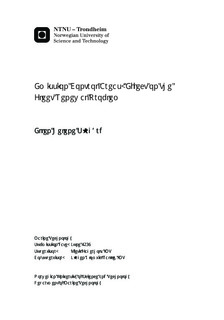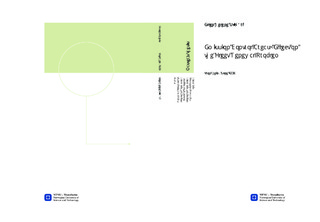| dc.description.abstract | An important strategic planning problem in shipping is the fleet renewal problem. The purpose for liner shipping companies is to minimize the company's costs while finding the best way in which to develop a fleet over time to service all trades. A number of restrictions and regulations must be regarded when making fleet optimization models, and one such concerns Emission Control Areas (ECAs). These are areas of the world seas where strict emission limits are set for $SO_x$ and $NO_x$ in exhaust gas from ships, introduced by the International Maritime Organization (IMO). The purpose of this thesis is to implement the changes to a fleet renewal model introduced by accounting for ECAs. To the author's knowledge, there is no work considering the inclusion of ECAs in fleet renewal models in the existing literature.The inspiration for the fleet renewal models proposed in this thesis has been the collaboration research project MARFLIX. Information about the sizes and characteristics of the vessels in the fleet, as well as trade information, has been provided by the liner shipping company WWL. This information is the basis for one of the test instances. The other two instances are reduced versions of the full WWL case.To investigate the effect on the fleet decisions of including speed optimization, one basic model with fixed speed and one extended model with variable speed is presented. The fleet decisions resulting from these models are compared, and the results show that speed optimization makes the fleet more flexible, which in turn leads to fewer changes to the fleet. The deployment cost for the optimal fleet from the two models is found, and a reduction in the size of the fleet in the speed extended model leads to a cost decrease of 0.297~\% and 0.330~\%, for the full and medium case, respectively. These numbers, though seemingly small in size, correspond to a significant amount of money as the magnitude of the total costs is several billion dollars.Based on the results from the speed optimization analysis, the conclusion is drawn that including variable speed in a fleet renewal model is profitable. Therefore, the speed extended model, hereby denoted as the original model, is the basis for the ECA extended model. To include the regulations ECA compliant vessels are defined as vessels with emissions beneath the ECA limits. Non-compliant vessels must either switch to low sulphur fuel (MGO) when sailing inside ECAs or be retrofitted with a scrubber. Scrubbers are used for exhaust gas cleaning, and operating with a scrubber allows the vessel to use Heavy Fuel Oil (HFO) while keeping the emissions beneath the ECA limits.The emission limits must be followed by all vessels sailing inside an ECA. If the regulations are not considered when planning the future fleet, they must be when the deployment is decided. The results in this thesis suggest that taking ECAs into account when making the fleet renewal plan induces savings of 0.602~\% for the full case and 0.712~\% for the medium case. The fleet is adjusted to be more suitable for deployment in ECAs, and retrofitting reduces sailing costs for the upgraded vessels.There is high uncertainty related to some of the estimates made for the input values. To investigate possible future situations of demand, fuel price, and scrubber price analysis have been performed. The results from these show that a shift in demand towards ECAs, lower scrubber price and higher MGO price leads to an increase in the number of retrofitted vessels, and thus a reduction of total costs when accounting for ECAs in the fleet renewal model. With a decrease in the MGO price the benefit of retrofitting vessels disappear, and the cost of fuel switch decreases. Taking ECAs into account when making the fleet renewal plan is nevertheless beneficial.The fleet in the small test instance is large enough to service all trades without the need for fleet changes during the five year period. No saving occur with the original input values, and thus there is no benefit when including ECAs. It will however be profitable to retrofit vessels when the MGO price is increased and when scrubber price is decreased, which will lead to savings using the ECA extended model also in this instance. In some analysis there are no difference between the models in fleet changes for the first time period. In these cases there is no direct benefit of using the ECA extended model, but the trends shown in later time periods can nevertheless indicate a better long term plan than the one from the original model. When estimates for input values are made the model is easy to use, and the solving time for the full case is 11.9 seconds. These facts, in addition to the cost savings possible to obtain, show that there is great potential in using the ECA model for fleet renewal planning. | nb_NO |

